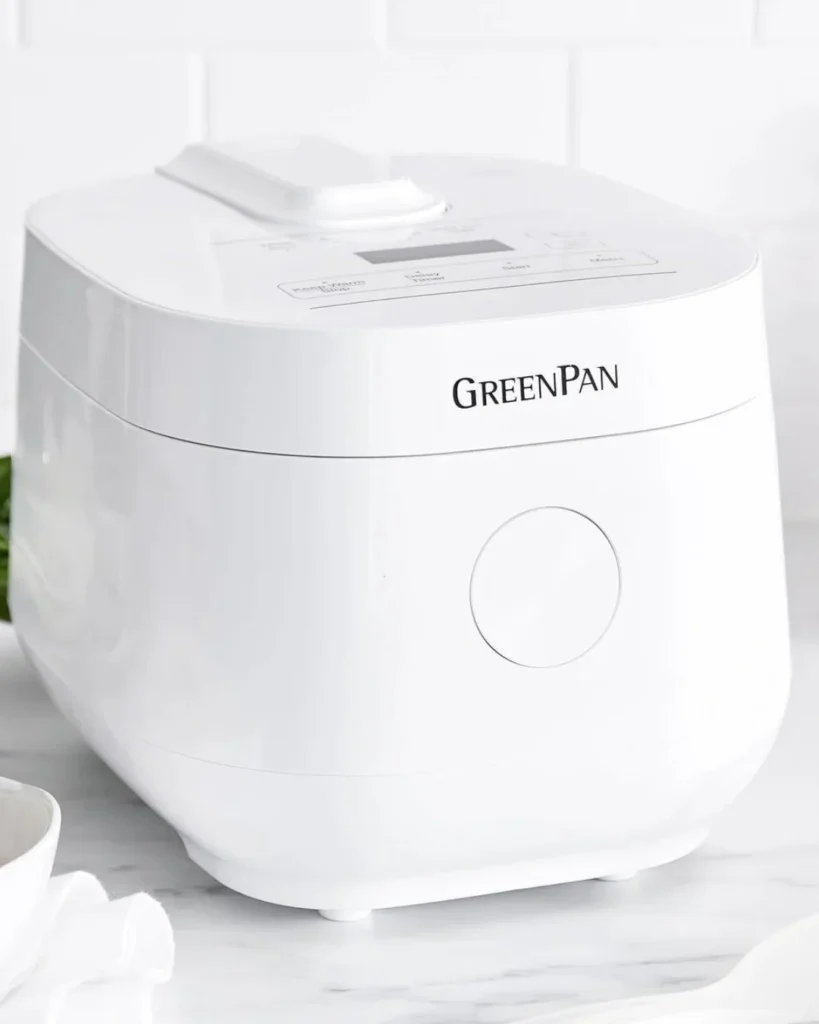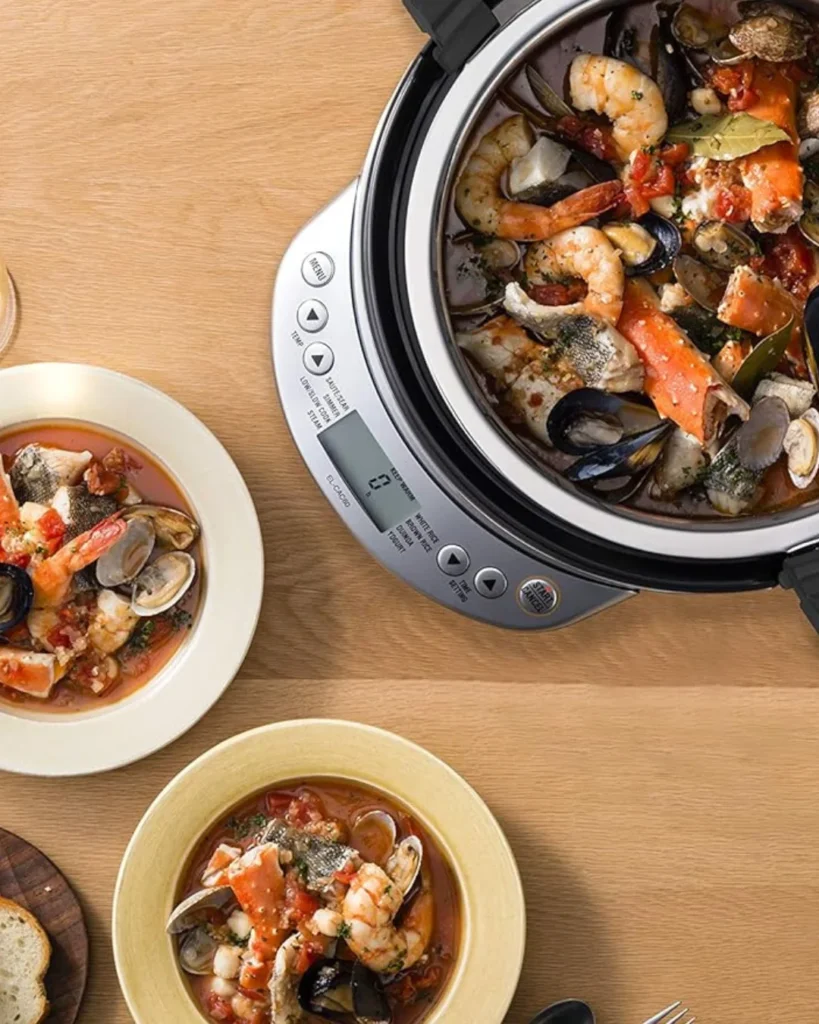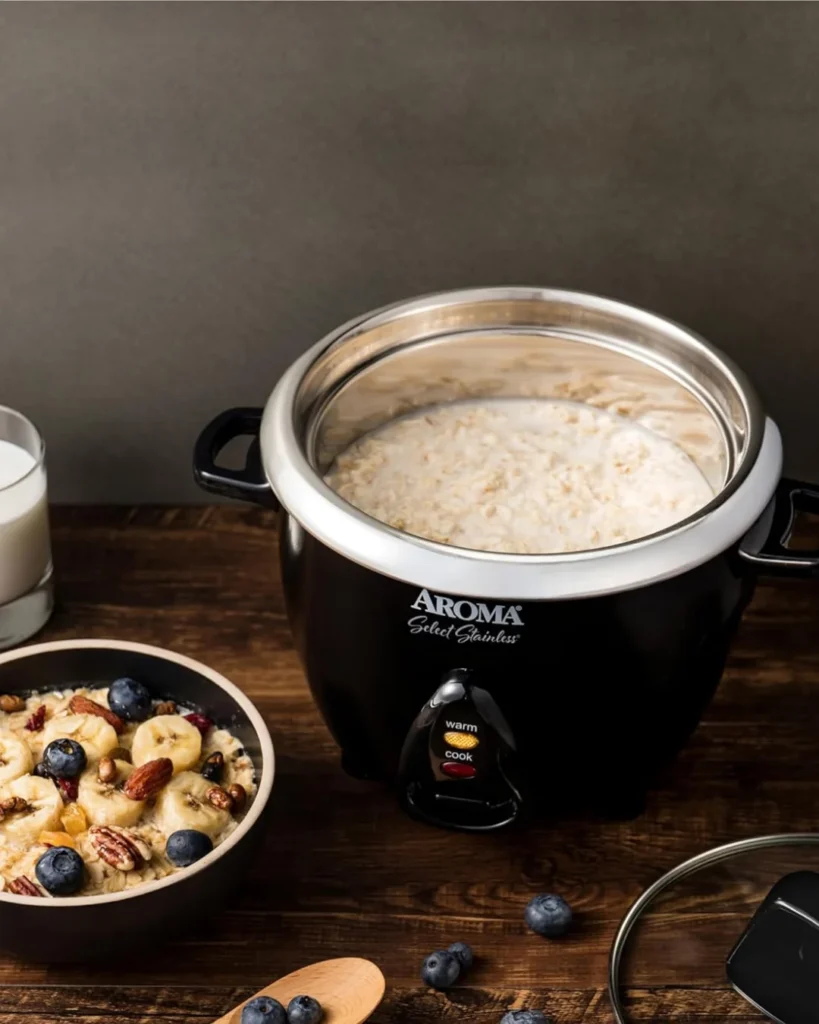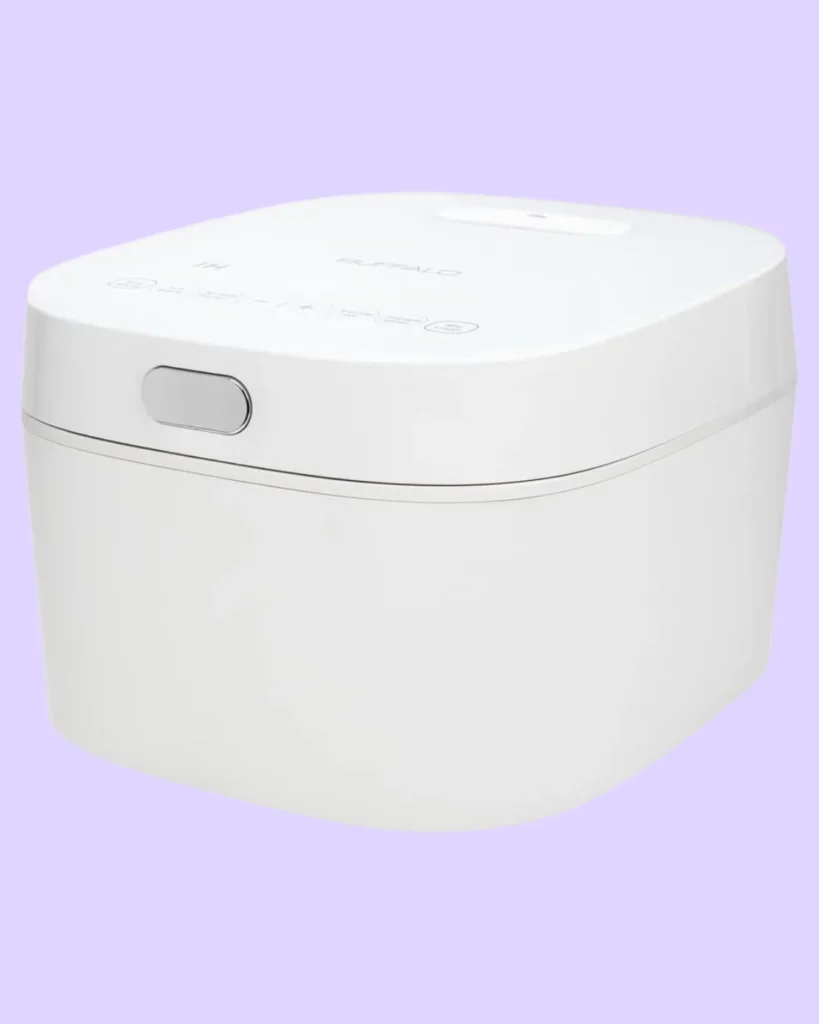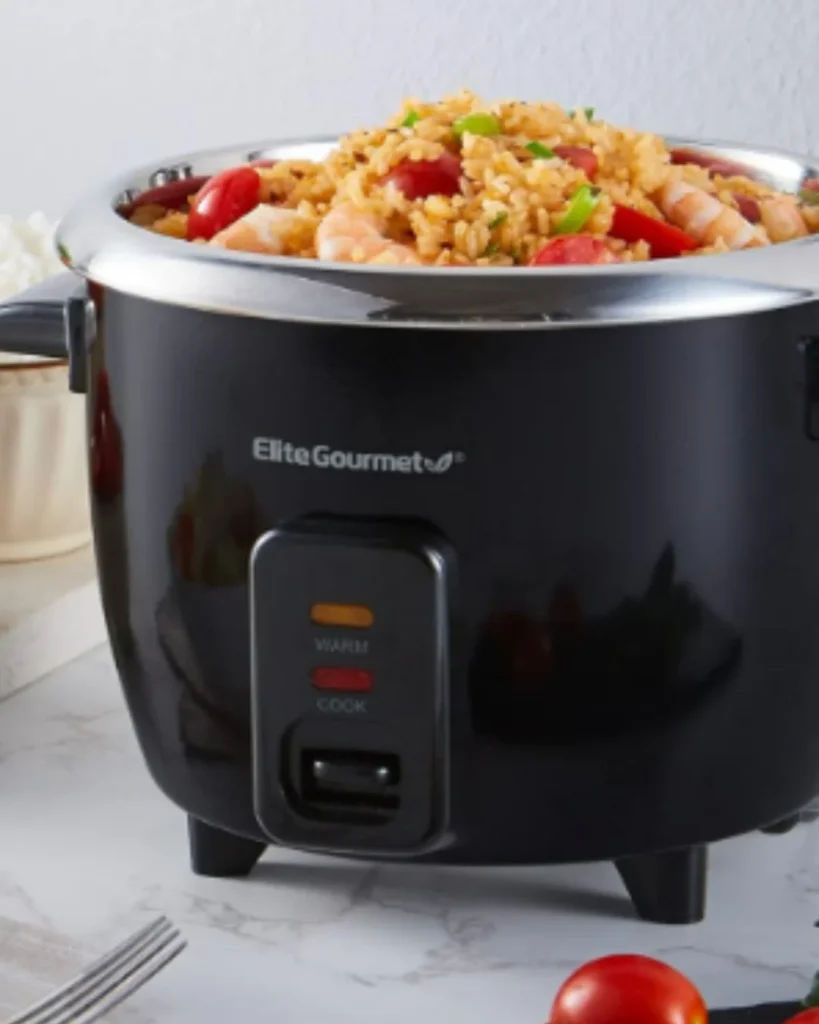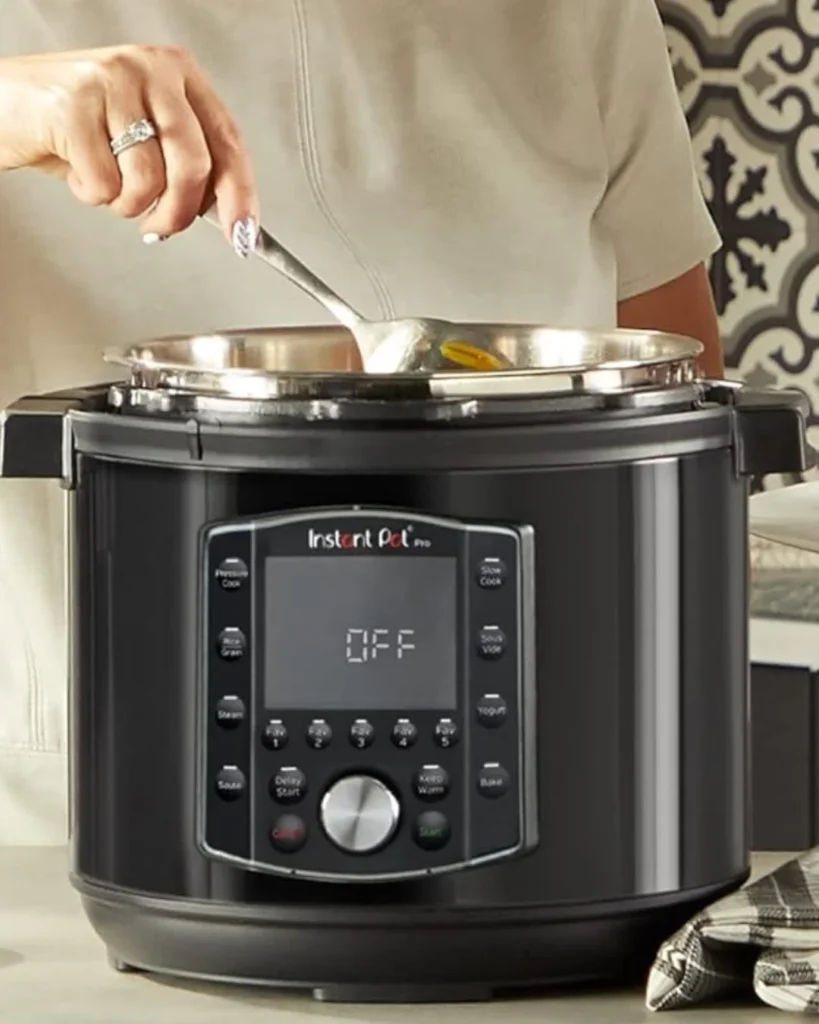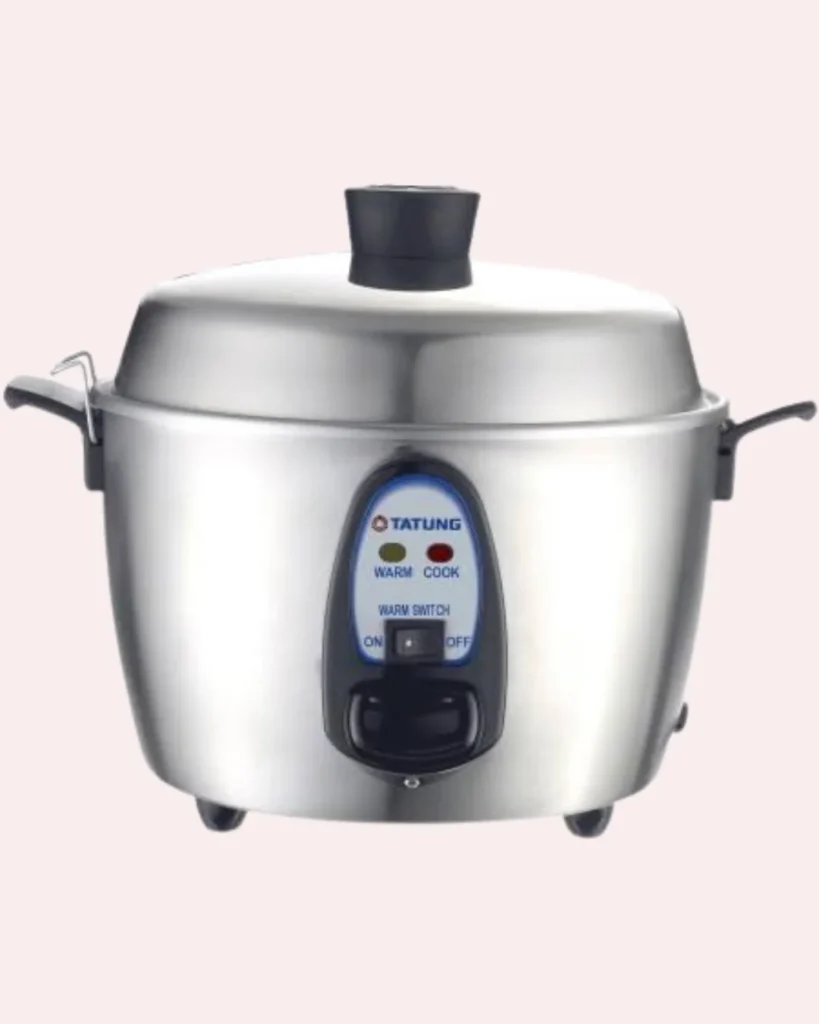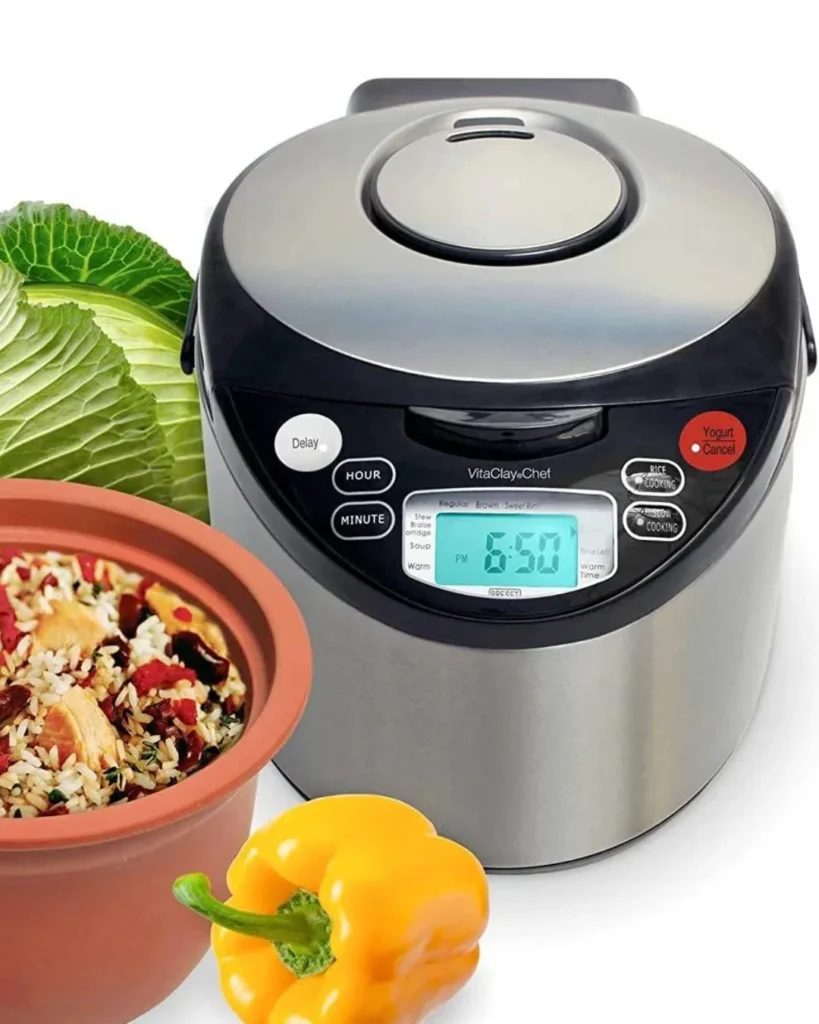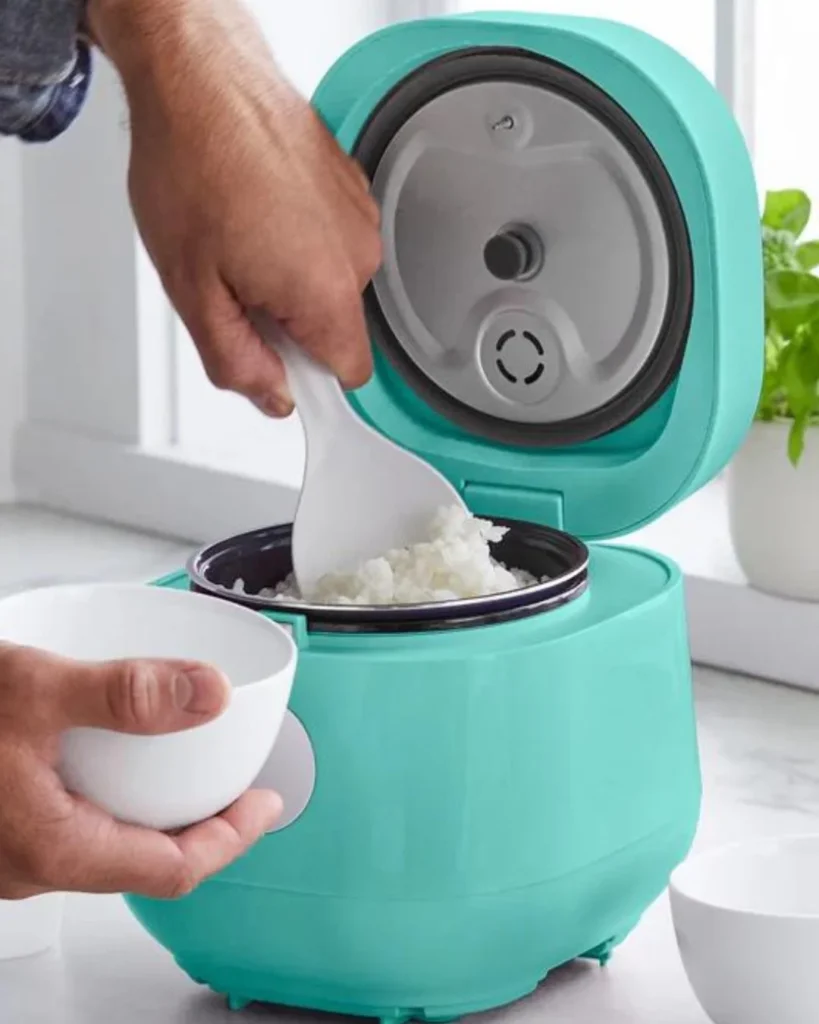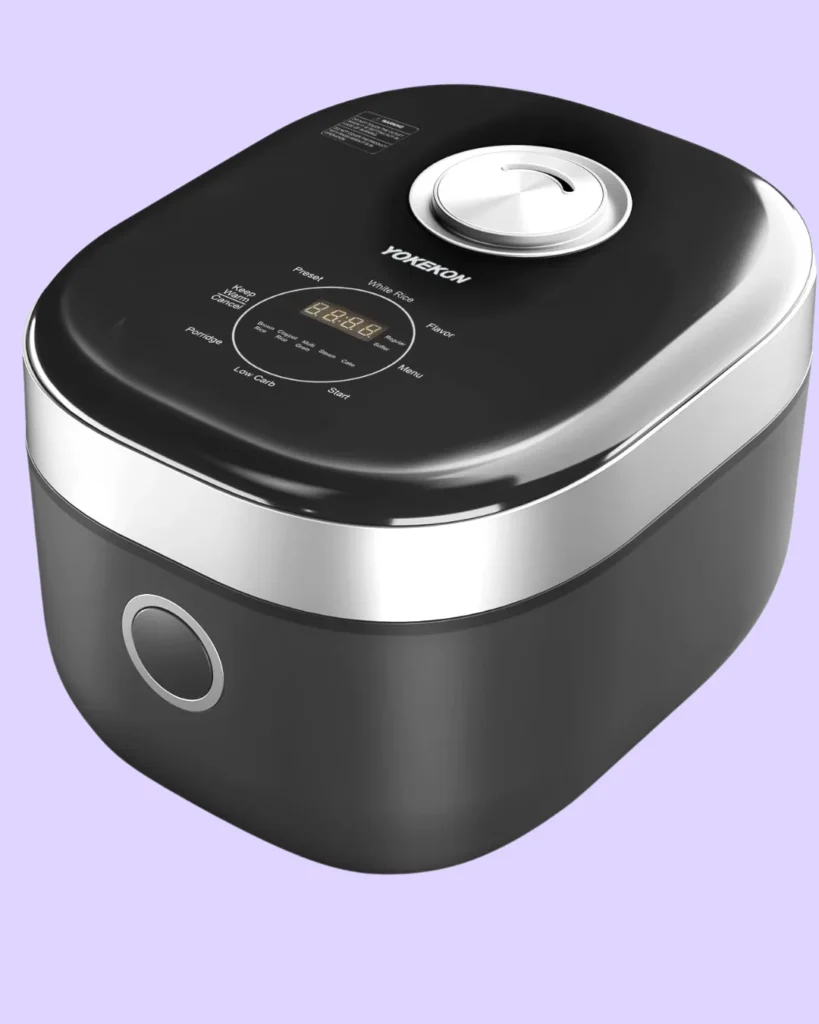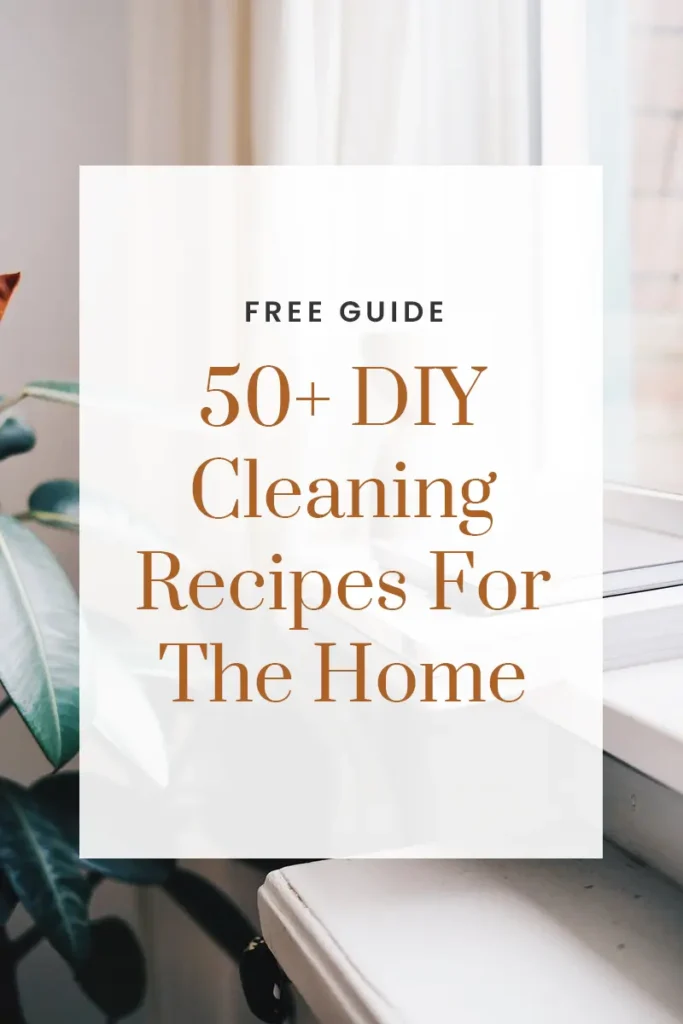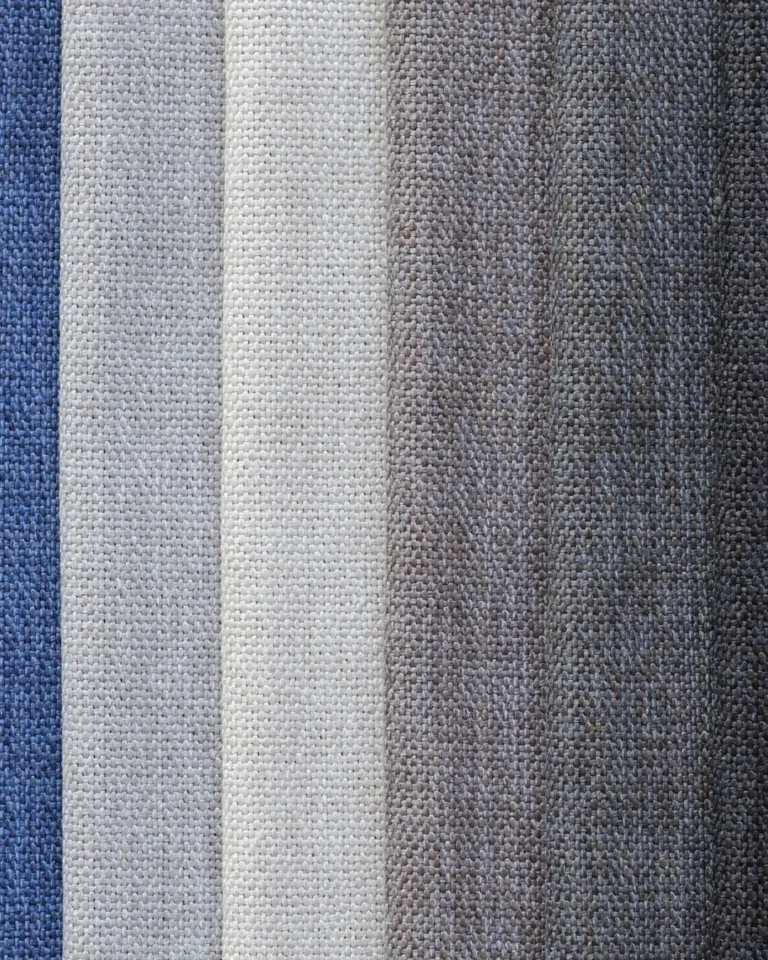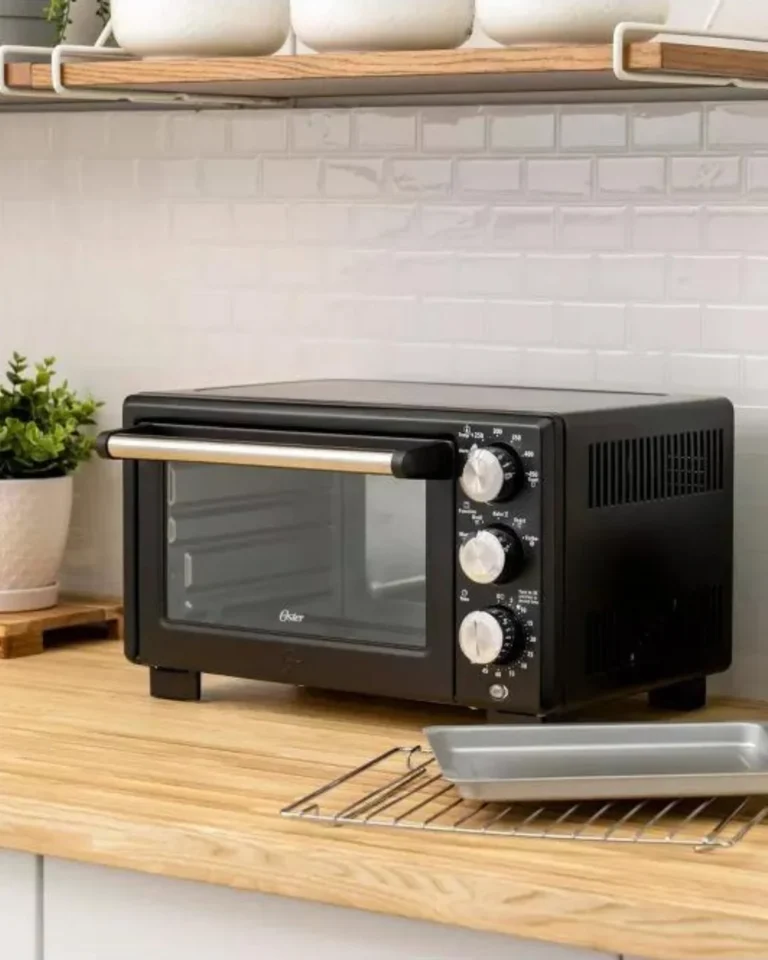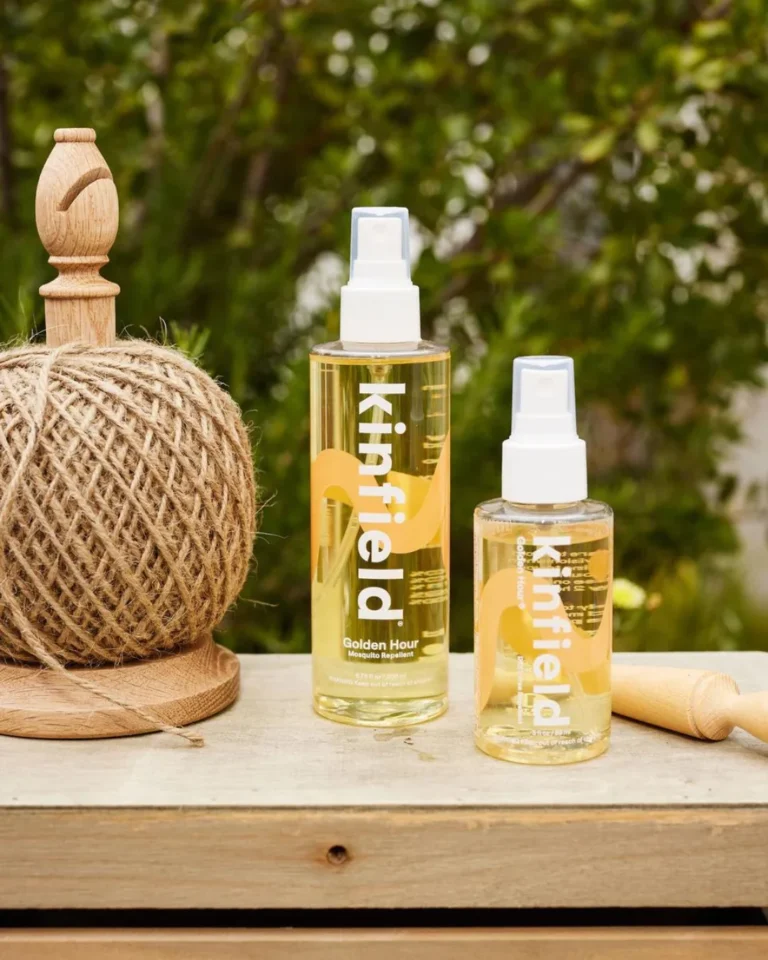SKL is reader supported. When you buy through links on our site, we may earn affiliate commission. Learn more here.
Looking for the best non toxic rice cookers to help you prepare healthy, delicious meals for the entire family? We did all the research and ranked the 10 safest, Teflon-free rice cooker options on the market for every budget.
At temperatures above 500°F (260°C), PFAS (including PTFE), and Teflon, toxic nonstick coatings can leach into the food during the cooking process and cause an array of health issues.
Unfortunately, these harmful chemicals can be found in most cooking appliances and tools, including rice cookers, air fryers, cookware, and bakeware.
So, let’s make sure that your delicious meals are safe, healthy, and ridiculously delicious, shall we? Here’s a roundup of 2024’s best PFAS-free rice cookers accruing to dozens of happy customers.
SKL top picks, in a nutshell…
- Overall Best Non-Toxic Rice Cooker: Green Pan
- Best Energy Saving Rice Cooker: VitaClay
- Most Affordable Rice Cooker: Aroma
- Safest Mini Rice Cooker: Green Life
- Best Toxin Free Rice Cooker For Families: Green Pan
Let’s be honest – we’ve all had to deal with burnt bottoms and mushy textures at least once in our rise cooking journey. I’ll be the first to admit that, before starting to use a rice cooker, I used to struggle a lot with achieving the ideal texture and consistency.
With precise temperature control and automatic timing, the best non-toxic rice cooker in 2024 delivers fluffy, perfectly cooked rice without you lifting a finger. Just measure, add water, press a button, and you’re done. This means more time for you to enjoy your meal and less time worrying about it.
Modern models come with settings for a variety of grains, including quinoa, couscous, and even risotto. This versatility is perfect for those who like to mix up their meals and experiment with different ingredients. Imagine effortlessly preparing a hearty quinoa salad or a comforting bowl of creamy risotto—all in the same appliance.
One of my favorite features of the PFAS-free rice cooker is its ability to create one-pot recipes. Many nontoxic rice cookers include a slow cook function, turning your rice cooker into a mini slow cooker. Some even come with a steaming tray, allowing you to cook vegetables, fish, or dumplings while your rice cooks below. Once your dish is done, the cooker automatically switches to “keep warm” mode, maintaining your food at the perfect temperature until you’re ready to eat.
You can even use them to make a variety of unexpected dishes like frittatas, cakes, and even homemade yogurt. The gentle, even heating makes them perfect for experimenting with new recipes and expanding your cooking repertoire.
Nonetheless, I can’t stress enough the fact that not all rice cookers are created equal. As someone who’s constantly looking for healthy alternatives to the most toxic household items, I’ve researched and reviewed dozens of kitchen swaps over the years.
From powerful non-toxic blenders and BPA-free steamers to the healthiest cutting boards, if there are better options, I’m here to share them! Unfortunately, as I was researching the best non-toxic rice cookers, I quickly realized that there wasn’t much information available online on this specific topic.
So, in this guide, I’ll share the safest food contact surfaces and the worst rice cookers to avoid.
Which Rice Cookers Should I Avoid?
PFAS (including PTFE and Teflon) ceramic non-stick coatings containing nanoparticles, and those mysterious, undisclosed coatings are not the best choice for rice cookers. Let’s take a deep dive into why…
PFAS and PTFE
PFAS are known for their chemical stability and resistance to heat, water, and oil, which is why they are used in non-stick coatings like PTFE (Teflon). The same properties that make PFAS useful in the kitchen also make them incredibly persistent in the environment and our bodies. Dubbed “forever chemicals,” they don’t break down easily.
Instead, they accumulate over time, building up in our blood, water supplies, and even the air we breathe.
The production of PTFE involves chemicals like PFOA and PFOS, which have been linked to cancer, liver damage, thyroid disease, and developmental problems in children. Even though these specific chemicals are being phased out, their long-lasting nature means they’re still present in the environment and our bodies.
When Teflon-coated cookware is overheated (above 260°C or 500°F), it can release fumes that contain toxic chemicals. These fumes can cause polymer fume fever, a condition with flu-like symptoms such as headaches, chills, and fever. Long-term exposure, even at lower levels, can potentially lead to more severe health issues.
Ceramic Non-Stick Coatings with Nanoparticles
Ceramic non-stick coatings have been heralded as a safer alternative to Teflon. They’re often marketed with phrases like “eco-friendly” and “non-toxic.” But there’s more to the story, especially when nanoparticles are involved.
Nanoparticles are incredibly tiny particles, smaller than 100 nanometers in diameter – to put that in perspective, a single human hair is about 80,000-100,000 nanometers wide. These particles can interact with biological systems in unique ways, sometimes beneficial but often concerning.
There’s ongoing research into what happens when we ingest nanoparticles. Some studies suggest they could pass through the intestinal barrier and enter the bloodstream, potentially reaching various organs and causing unknown effects.
What’s more, over time, ceramic coatings can wear down, especially if used frequently or cleaned with abrasive materials. This degradation might release nanoparticles and other materials into your food, posing potential health risks like inflammation and cellular damage.
Mystery Coatings
Some rice cookers come with coatings labeled as “proprietary” or simply don’t disclose what they’re made of. This lack of transparency is a red flag. Without knowing what’s in these coatings, it’s impossible to assess their safety.
These mystery coatings could contain any number of harmful substances that could leach into your food, especially at high cooking temperatures. What’s hidden behind the curtain could be worse than what we know about.
If these coatings degrade or release fumes, the health risks could be similar to those posed by known harmful coatings, such as respiratory issues, hormonal disruptions, or even cancer.
SKL-Approved Non-Toxic Rice Cookers:
The Bistro 8-Cup PFAS-free rice cooker by Green Pan stands out with its Thermolon Volt Healthy Ceramic Nonstick surface.
This diamond-infused ceramic nonstick coating is specially designed for kitchen appliances and is completely free of harmful toxins such as PFAS, PFOA, lead, and cadmium.
On top of being safe and healthy, this rice cooker without Teflon automatically adjusts its settings based on internal sensors to optimize the cooking process with the help of Fuzzy Logic Technology.
The ceramic rice cooker also features a delay timer and a keep-warm function.
Plus, the bowl, measuring cup, and rice spatula are all dishwasher safe, making cleanup a breeze. Lastly, you can fully take advantage of the easy-to-use presets that simplify the process of selecting the right cooking setting.
Price
From $113.99
materials
Thermolon Volt Healthy Ceramic Non-Stick (Silicone Coating)
notable features
8 Cups. Dishwasher Safe Bowl
Zojirushi’s 6 Qts stainless steel rice cooker is designed with simplicity and versatility in mind, featuring nine convenient menu settings: Sauté/Sear, Simmer, Low/Slow Cook, Steam, White Rice, Brown Rice, Quinoa, Yogurt, and Keep Warm.
These presets make it incredibly easy to prepare a wide range of dishes, from perfectly fluffy rice to slow-cooked meals.
The unique low/slow cook setting offers four temperature options, ranging from 140°F to 200°F, ideal for slow cooking, making tofu, and other low-temperature culinary adventures.
Another feature I love about this PFAS-free rice cooker is the upward-facing control panel with an LCD. Many reviewers agree that leaving it on overnight for slow cooking is a lifesaver on busy days.
Price
$185
materials
8/8 stainless steel cooking pot with resin handles resists corrosion and rusting
notable features
6 Quarts. 9 convenient menu settings which include Sauté/Sear, Simmer, Low/Slow Cook, Steam, White Rice, Brown Rice, Quinoa, Yogurt and Keep Warm.
If you’re on the hunt for a non-toxic rice cooker that doubles as a Steamer, look no further than the Aroma Stainless Steel Rice Cooker.
This 1.8-liter kitchen appliance is perfect for preparing large quantities of rice, ideal for families or meal prepping. The removable non-stick inner bowl and stainless steel construction not only add durability but also enhance the overall cooking experience, making it easier to prepare tasty and healthy recipes.
It comes with two heat settings – Cook and Warm, what’s more, with the handy indicator lights on the display, you’ll easily monitor the cooking process.
Once the cooking cycle is complete, the rice cooker automatically switches to the warming mode, keeping your food fresh and warm until you are ready to serve. As we mentioned, the cooker comes with a steamer and accessories kit.
The stainless steel steamer has cool-touch handles and the tempered glass lid with a steam vent that allows you to monitor the cooking process without lifting the lid.
Price
From $31.99
materials
Food-grade 304 stainless steel cooking pot. BPA-free measuring cup
notable features
Various Sizes. Dishwasher Safe Bowl
The Buffalo 5 CUPIH Smart Cooker brings Japanese cutting-edge induction heating technology to your kitchen.
This advanced technology is here to guarantee that over 50% of the cooker’s top conduction steel is heated, so that all ingredients to be tossed and heated evenly from all angles, locking in nutrients and releasing the freshest flavors.
The keep-warm function maintains your food’s temperature for up to 12 hours, so your meals are always ready to serve when you are.
Also, unlike other cookers, it has no chemical coating, offering great heat retention and the ability to withstand tough acids such as alkali.
With this Teflon-free rice cooker, you can program your meals 24 hours in advance, and let the smart panel and Micom temperature control give you the precision and control you need every single time.
It comes with essential accessories including a measuring cup, rice paddle, ladle, and power cord, providing everything you need to start cooking right away.
Price
From $207+
materials
Inner pot is made of Buffalo Clad which is resistant to oxidation, non-stick and has no chemical coating
notable features
5 Cups. 18-month warranty outer pot. Lifetime Warranty Inner Pot
Next up one of the best non-toxic rice cookers that can cook up to 10 cups (5 cups uncooked) of your favorite jasmine, basmati, or brown rice effortlessly.
Rest assured that your Elite Gourmet Electric Rise Cooker will be cooked evenly and to perfection every single time.
When you are ready, the “Keep Warm” function, will make sure that your delicious rice is fresh and warm for hours before serving.
What made over 10.000 Amazon reviewers fall in love with this PFAS-free rice cooker is its surgical-grade 304 stainless steel cooking pot which is durable and extremely healthy.
As a bonus, you can serve your yummy rice straight from the cooker – the pot is removable!
Price
From $38.00
materials
304 Surgical Grade Stainless Steel Inner Pot
notable features
6-10 Cups, Handwash Only.
18.000+ folks agree that the Instant Pot DUO 60 Duo 7-in-1 Smart Cooker helps save time and energy. Unlike other appliances, this non-toxic rice cooker heats to cook food up to 70% faster than other methods and delivers consistent, delicious results every time.
It comes packed with an array of smart programs for Soup/Broth, Meat/Stew, Bean/Chili, Slow Cook, Sauté, Rice, Porridge, Steam, Yogurt, Multigrain, and Poultry. Keep Warm, and Pressure Cook.
If you want to quickly release steam, all you have to do is push the quick release button, and voila! Plus, its 5.7 litres capacity allows you to cook up to 5 dishes at once.
Price
From $119.95
materials
Stainless Steel
notable features
Pressure Cooker, Rice Cooker, Slow Cooker, Yogurt Maker +
The Tatung Stainless Steel Rice Cooker has been helping at-home chiefs prepare delicious recipes for over 60 years.
It’s primarily a 6-cup, healthy rice cooker but it also doubles as a boiler and steamer that helps you cook braises and stews, steam breads and buns, and even reheat leftovers.
The company picked the healthiest materials to create their top-selling cooker, including a stainless steel inner pot complete with a pot lid.
The steaming insert is also made of stainless steel which I absolutely love.
Also, the set comes complete with a rice spatula and a free digital download of the Yun Hai Tatung Family Cookbook to inspire your next creations.
Price
From $169.99
materials
Stainless steel inner and outer
notable features
6 cups
This energy-efficient Vitaclay Rice Cooker is a true multitasker! It’s basically a rice cooker, soup maker, bean cooker, sauce maker, pasta meal maker, casserole maker, stew maker, chowder and sea stew maker.
That’s right! You can roast all types of meats too without having to worry about chemicals leaching into your food. Instated of non-stick chemical glazes, lead, and aluminum, Vitaclay uses innovative computerized clay heating technology.
On top of that, the double lid design creates micro-pressure to maximize steaming quality and cuts slow cooking time and energy usage in half.
The result? 50% more cooking efficiency, using as much as 50% less energy!
Price
From $229.99
materials
Natural, unglazed, highly prized Zisha clay inner pot
notable features
50% more cooking efficiency, using as much as 50% less energy. Tested and verified by 3rd party laboratories-UL listed, FDA, CA Prop 65, and RoHS laboratory tested.
The Green Life ceramic rice cooker is the most display-worthy option on this list. Don’t the it fool you, this appliance is packed with amazing features and easy-to-use presets.
This safe rice cooker is designed to automatically adjust to your grains – whether that’s white rice, brown rice, quinoa, or steel-cut oats.
To keep you and your family healthy, Green Life uses a PFAS-free nonstick coating for quick releases and easier cleanup. So rest assured that you won’t find any PFAS, PFOA, lead, or cadmium lurking on your plate.
Price
From $49.99
materials
PFAS-Free, PFOA-Free, lead-free, and cadmium-free silicone coating inner pot
notable features
4 cups, dishwasher safe
Yokekon is not your average mini, non-toxic rice cooker. It uses a unique three-step process—boiling, straining, and steaming—to remove up to 48% of unhealthy digestive starch.
If that wasn’t enough, the Yokeko’s 3-cup rice cooker and steamer offer 8 cooking functions, including quick cook, white rice, brown rice, sushi, risotto, low carb, steam, and cake.
It automatically optimizes taste, texture, and aroma to cater to your diverse cooking needs. Instead of harmful coatings, this mini comes with a 5-layer, 2mm thick ceramic-coated inner pot and a detachable stainless steel inner lid.
Last but not least, you can set your meals with the 12-hour delay timer to keep the food warm through the day – or, night!
Price
From $119.95
materials
From $119.95
notable features
8 cups, Dishwasher Safe, 1 Year Warranty.
What Is the Safest Material for a Rice Cooker?
To keep you and your family safe, make sure to choose the best non-toxic rice cooker that’s PFAS-free, PFOA-free, Lead-free, and Cadmium-free.
Stainless Steel
Stainless steel is renowned for its durability and non-reactive properties. Unlike other materials, stainless steel doesn’t interact with acidic or alkaline foods, ensuring that the flavors and nutrients of your rice remain intact.
That’s why it’s also tooted as one of the best materials for safe cookware sets, including Dutch ovens and fish pans.
Stainless steel is free from harmful chemicals like PFAS, PFOA, lead, and cadmium. This means there’s no risk of toxic substances leaching into your food, even when cooking at high temperatures.
On top of that, this material is extremely resilient which means it won’t chip or wear down over time, reducing the risk of ingesting small particles. What’s more, Its smooth surface makes it easy to clean and maintain, preventing the buildup of bacteria and other contaminants.
Cladding Material
Cladding refers to cookware that combines different metals to enhance performance. Typically, stainless steel is bonded with aluminum or copper to improve heat distribution while retaining the non-reactive benefits of stainless steel.
Like pure stainless steel, cladding materials are free from harmful chemicals and allow heat to be distributed evenly across the cooking surface, preventing hotspots.
Uncoated Ceramic
Ceramic rice cookers are made from natural clay that is kiln-fired. This process results in a non-stick surface without the need for chemical coatings.
Uncoated ceramic is naturally free from PFAS, PFOA, lead, and cadmium, making it one of the safest materials for cooking. It can also have great nonstick properties. Properly glazed ceramic has a naturally non-stick surface, reducing the need for excessive oils and fats.
Silicone-Coated
Silicone-coated cookware combines the flexibility and heat resistance of silicone with a durable base material, often stainless steel or another metal. High-quality silicone coatings are free from PFAS, PFOA, lead, and cadmium.
They do not release harmful fumes, even at high temperatures. Also, in addition to being very resistant to high temperatures, silicone provides an excellent non-stick surface.
Should I Worry About Arsenic in Rice?
Yes, Arsenic is a toxic trace element found naturally in our environment. Arsenic exists in two forms: organic and inorganic. Organic arsenic is found in plant and animal tissues, while inorganic arsenic is more toxic and prevalent in rocks, soil, and water.
Rice and rice-based foods stand out as the primary source of inorganic arsenic in our diets. That’s because rice plants absorb arsenic from their environment, particularly the inorganic form. Due to its cultivation in waterlogged fields, rice accumulates more arsenic than other crops.
Similar to lead or mercury, excessive arsenic intake can become toxic over time. It may increase the risk of cancer, high blood pressure, type 2 diabetes, and respiratory diseases.
Luckily, there are some easy methods to reduce arsenic levels in rice before cooking.
How to Remove Arsenic From Rice Before Cooking
- Rinse the rice thoroughly under running water. Place the grains in a fine mesh strainer and pour water over them until they run clear. This step can remove about 10% of the arsenic.
- Soak the rice overnight (for about 48 hours) before cooking. This opens up the grain and allows the arsenic to escape. Drain the rice and rinse it thoroughly with fresh water.
- When cooking rice, use a ratio of one cup of rice to six cups of water. Boil the rice like pasta, and then drain any extra water once the grains are tender. This method can remove an additional 40% to 60% of the arsenic.
- Basmati rice tends to have lower arsenic levels compared to other varieties. Brown rice absorbs more arsenic while growing than white rice, so consider opting for white basmati rice.
This was your full guide to non-toxic rice cookers.
Whether you’re a seasoned chef or someone just starting, a non-toxic rice cooker can make meal prep easier and more enjoyable. Trust me, once you start using one religiously, you’ll wonder how you ever lived without it.
The most important thing to consider when choosing a safe rice cooker for the entire family is the contact surface. To keep your meals free from chemicals, pick a model that’s completely free from PFAS (including PTFE), Teflon, ceramic non-stick coatings that contain nanoparticles, or mystery coatings.
My top choice will always be PFAS-free rice cookers made of stainless steel because it is not only durable, and 100% safe but also prevents the buildup of bacteria and other contaminants.
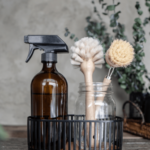 Snag Your Free DIY Non-Toxic Cleaning Recipe Ebook!
Snag Your Free DIY Non-Toxic Cleaning Recipe Ebook! 